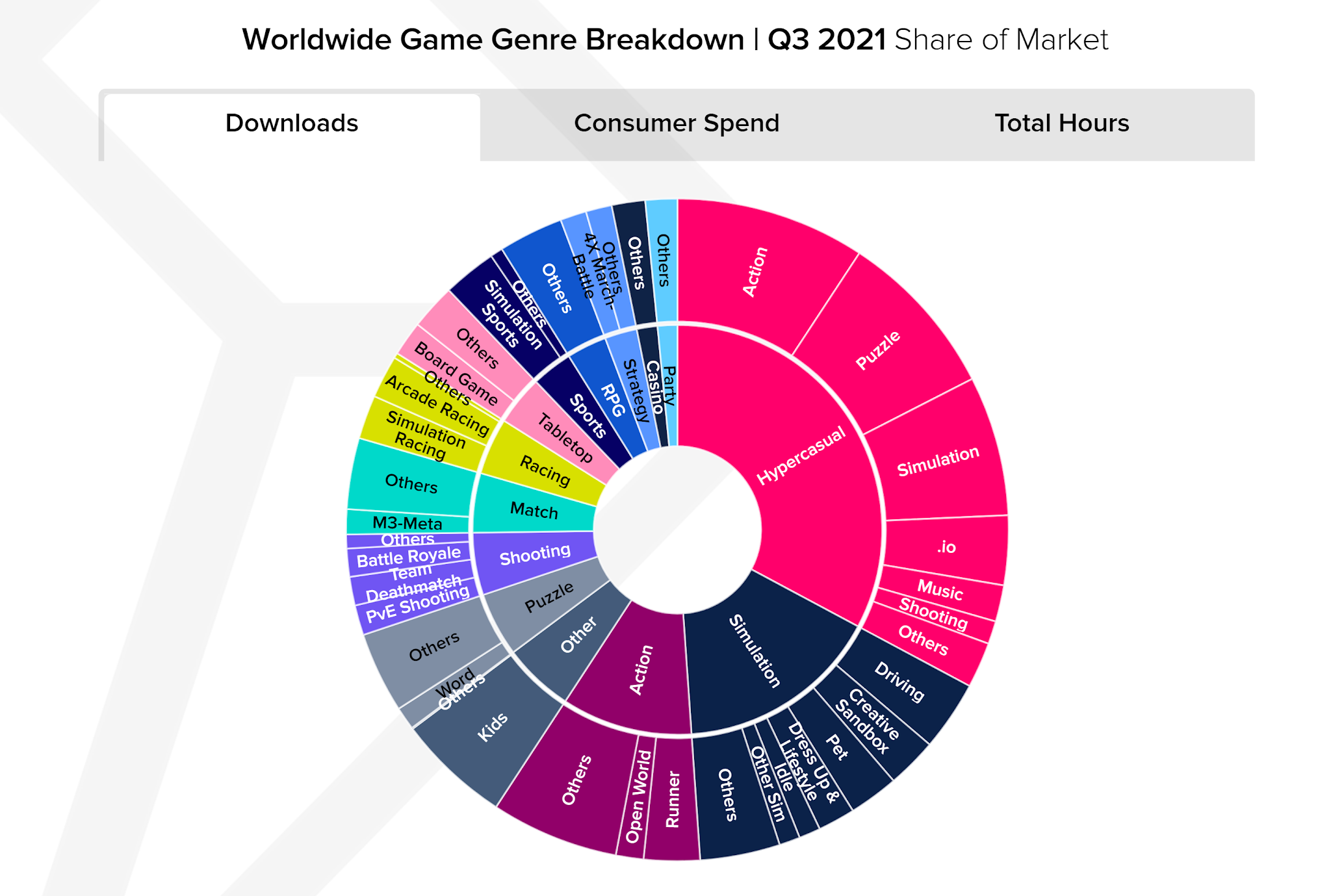Data analytics firm App Annie reveals that hyper-casual games were by far the most popular genre of games across mobile devices in terms of both revenue and downloads.
Before we go on and discuss this article, I’d like to set a few moments aside for the seething Bloodborne and Dark Souls players. After all, how else will we, the uncultured masses, ever learn about how casual games (and mobile games paramount amongst them) are destroying the gaming community as a whole and how players such as themselves only have time for the most complex and invigorating challenges provided by developers. I can no longer hear the rapid clicking of 30-year-old men arising from a thousand different basements, so I believe we’re good to go on the discussion end of things.
The mobile gaming industry had been growing very well for quite some time, but 2020 and the COVID pandemic shot earnings up by literal billions. The marketplace has further expanded, adding more versatility in terms of game design and genres, while still allowing successful developers to earn a killing in the process. The most successful applications across most app stores happen to be mobile games nowadays. It’s an industry that’s seen a massive amount of success, with a projected USD $120 billion in earnings by the end of 2021, and doesn’t seem to be coming down anytime soon.
The App Annie report reveals that 2021 saw users amassing a total of 14.3 billion new game downloads from across the Google Play Store and App Store. Hyper-casual games accounted for a rather hefty 3.6 billion of those downloads, with popular examples being Subway Surfers, and games from the Talking Tom series. Honestly, I’m still surprised by just how well the latter’s doing, considering how Talking Tom just started out as an incredibly gimmicky voice modulator. Action games ended up being a popular sub-category with the hyper-casual crowd, with runner games such as the above-mentioned three games, and others such as Temple Run and its sequel, Temple Run 2.
Another rather popular genre of games ended up being, rather unsurprisingly, casino games. It seems like users really have a hard time cutting themselves off, with the genre earning a *ahem* modest USD $1.4 billion in customer spending. Either way, we haven’t even accounted for half of all of the 14 billion downloads that 2021 saw. Far from slowing it down, the casual scene is driving mobile gaming all the way to the top.
Read next: How Social Media Marketing Trends Might Change in 2022
Before we go on and discuss this article, I’d like to set a few moments aside for the seething Bloodborne and Dark Souls players. After all, how else will we, the uncultured masses, ever learn about how casual games (and mobile games paramount amongst them) are destroying the gaming community as a whole and how players such as themselves only have time for the most complex and invigorating challenges provided by developers. I can no longer hear the rapid clicking of 30-year-old men arising from a thousand different basements, so I believe we’re good to go on the discussion end of things.
The mobile gaming industry had been growing very well for quite some time, but 2020 and the COVID pandemic shot earnings up by literal billions. The marketplace has further expanded, adding more versatility in terms of game design and genres, while still allowing successful developers to earn a killing in the process. The most successful applications across most app stores happen to be mobile games nowadays. It’s an industry that’s seen a massive amount of success, with a projected USD $120 billion in earnings by the end of 2021, and doesn’t seem to be coming down anytime soon.
The App Annie report reveals that 2021 saw users amassing a total of 14.3 billion new game downloads from across the Google Play Store and App Store. Hyper-casual games accounted for a rather hefty 3.6 billion of those downloads, with popular examples being Subway Surfers, and games from the Talking Tom series. Honestly, I’m still surprised by just how well the latter’s doing, considering how Talking Tom just started out as an incredibly gimmicky voice modulator. Action games ended up being a popular sub-category with the hyper-casual crowd, with runner games such as the above-mentioned three games, and others such as Temple Run and its sequel, Temple Run 2.
Another rather popular genre of games ended up being, rather unsurprisingly, casino games. It seems like users really have a hard time cutting themselves off, with the genre earning a *ahem* modest USD $1.4 billion in customer spending. Either way, we haven’t even accounted for half of all of the 14 billion downloads that 2021 saw. Far from slowing it down, the casual scene is driving mobile gaming all the way to the top.
Read next: How Social Media Marketing Trends Might Change in 2022


